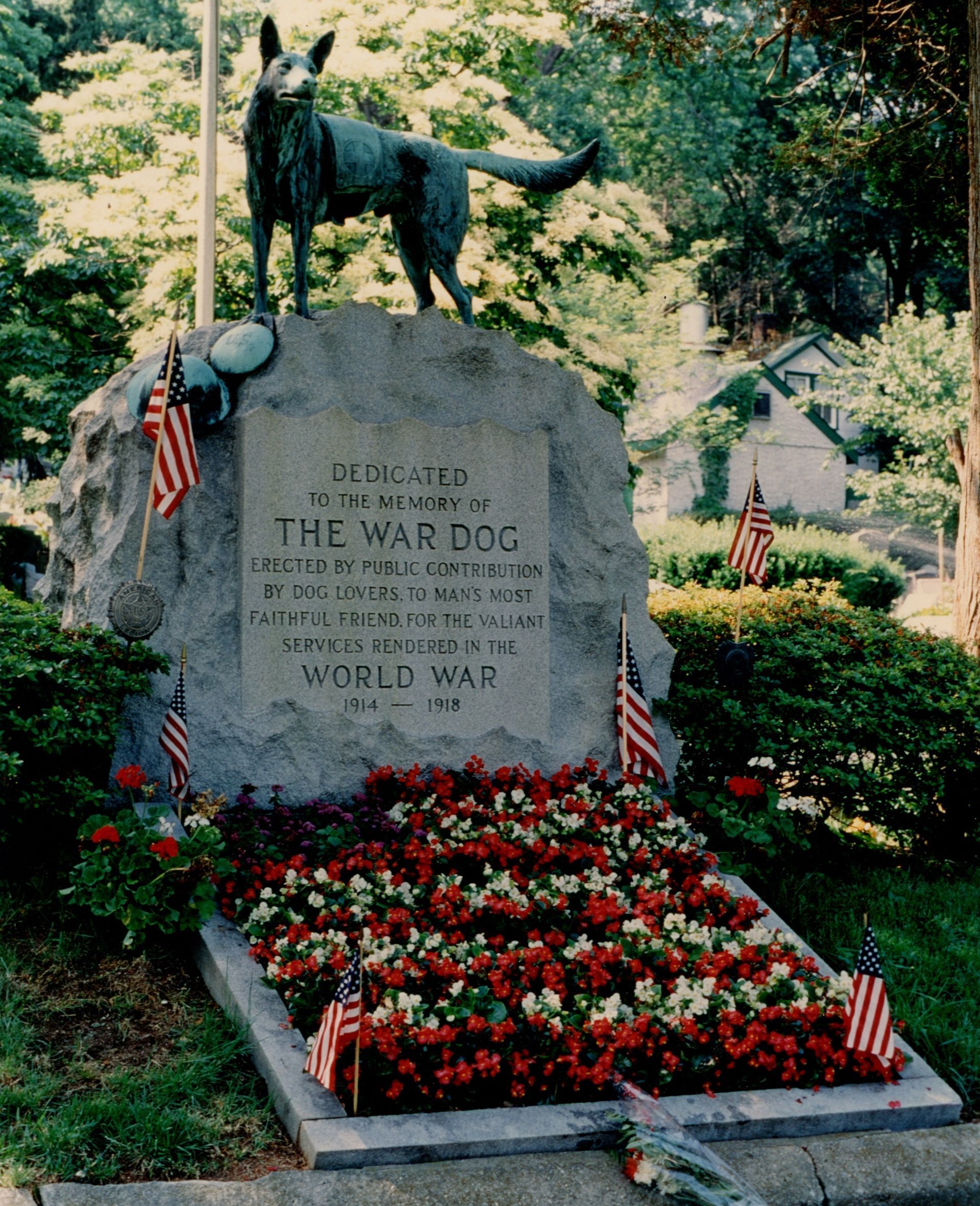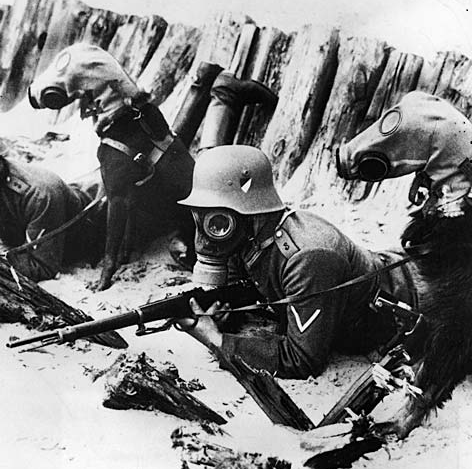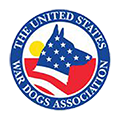World War I
The Great War Experience
World War I
The setting for World War I is unique, and it is difficult to comprehend the immense scale of destruction and suffering endured by millions of people. Most of the time was spent in static positions. Soldiers squatted down in trenches as each side engaged in furious battles to gain just a few yards of real estate. Between the combatants lay no-man’s land. It was here under the cloak of darkness that many dogs worked and achieved great success.
Dogs employed during WWI provided three main services: Red Cross dogs, often called mercy dogs that located wounded soldiers. Other dogs were trained for messenger duty, transportation of pigeons, and sentry detail. Still others were recruited as ammunition and light gun carriers, laying communication wires, and scouting. Hundreds of Jack Russell terriers were working to combat the hordes of rats that often infested the trenches. A conservative estimate of all the warring factions involved places the number of dogs employed at nearly 50,000!
If you happen to be travelling in New York just outside the city, you may want to stop at the Hartsdale Canine Cemetery and view a striking monument of a German shepherd. The plaque reads, “Dedicated to the memory of the war dog. Erected by public contribution by dog lovers to man’s faithful friend for the valiant services rendered in the World War, 1914-1918.” Those who helped establish the memorial had no idea at the time that this was not the “war to end all wars.” The likeness of the shepherd, lean and bearing Red Cross markings can evoke many feelings. What struck me first are the eyes, as the dog seems to gaze beyond you, searching for something or someone – a dog in the midst of his work.

The war dog memorial at the Hartsdale Canine Cemetery, Hartsdale, New York was dedicated to commemorating all the dogs that served during WWI (Michael Lemish)
The Red Cross dogs - or sanitary dogs (Sanitäshunde), as the Germans called them, provided wounded men with two essential services. They carried medical supplies and small canteens of water or spirits that were typically attached across the dog’s chest or with a saddlebag arrangement. The wounded man, if conscious, could avail himself of these supplies. The second and primary mission for the dog is once a wounded man was found to communicate this to his handler. How this was accomplished is truly remarkable. These animals would be the forerunners to today’s search and rescue dogs – with one caveat – nowadays SAR dogs do not need to deal with artillery or deadly mustard and phosgene gases to accomplish their task.

A 1918 painting by Alexander Pope portrays a Red Cross dog with a chemical attack or smoke in the background. The helmet indicates that a wounded soldier has been found. (Red Cross Museum).
The initial training involved having the dogs be able to distinguish the living from the dead. Once this was accomplished, a method to inform the handler a wounded man was located, needed to be developed. There were two methods developed. If the wounded man was somewhere behind their own battle line, the dog was trained to call for his handler. The vast majority of dogs searched no man’s land and a different technique was needed in this landscape.
At the beginning of the war, the innate sense of retrieval bred into many dogs led to the way they were trained, meaning the return of a cap or helmet indicating that a wounded soldier was located. In one case, a French Red Cross dog named Captain located thirty wounded men in a single day using this method.
This technique posed its own set of problems. Not finding a cap or helmet, the dog would pull a piece of uniform, a bandage, or even hair to accomplish the job at hand. This increased in frequency as the war went on and forced the Allies to rework their training methods. The new training regimen had the dog lie down if no wounded were found or beckon the handler to return to the site if indeed a soldier was still alive.
The Germans faced the same problem at the beginning of the war but went in a different direction with much better results. They devised a short leash called a Brindel, sometimes referred to as a Brinsel. Upon finding a wounded man, the dog would return with the leash in its mouth. Conversely, if the leash hung loose, no wounded or only the dead were to be found. It is reported that these dogs were trained to distinguish between friend and enemy and disregard the latter. This was propaganda and more reflective of the times, than of fact.
The amount of enemy activity in the immediate search area determined whether the Red Cross dogs would be sent out during the day. Most often they worked at night, relying on their acute olfactory capability. At this time people did not fully comprehend how dogs scented - only that they could. The scientific community did not have the capability to understand the olfactory ability of dogs or to the extent to which this gift could be developed.
Mercy dogs dealt with deadly gases, slit trenches, barbed wire, artillery, and the enemy as they went about their work. Four-footed silhouettes quietly and efficiently searched no-man’s land at night, occasionally illuminated by a flare or artillery blast. A French dog named Prusco, located nearly a hundred men after a single battle. The dog, wolf-like and all white in appearance, would drag men into protective craters and trenches before alerting his master. Several dispatches from different regiments mentioned the heroic efforts of this dog.
Dogs and horses alike were valuable animals widely used during the war and needed to be properly protected. The development of gas masks to protect humans was advanced to a point where they could afford some protection for both dogs and horses. Mercy dogs could not work while wearing a gas mask (although messenger dogs occasionally did) and they could only be used for short periods of times during a gas attack. One drawback is that they seriously inhibited the dog’s ability to pant and stay cool. These primitive masks would be refined in later years and were part of the U.S. military working dog inventory until 1968.

Primitive gas masks were provided to dogs (and horses) in the event of a chemical attack. (LOC)
Of all the armies that participated in the Great War, only the United States lacked war dogs within its military ranks, except for some sledge dogs in Alaska. When the Americans entered the war in 1917 it borrowed all the dogs they needed from the British and French forces. Our only canine contribution would be the delivery of four hundred sledge dogs to the French helping to haul ammunition in the Vosges Mountains.
Much of World War I consisted of trench warfare and battles lines that remained stagnant for prolonged periods of time. Communication on the front and with the commanders in the rear consisted of telephone lines or soldiers running with messages. When these methods failed, dogs were trained to fill the gap by relaying messages.
Dogs could run much faster than a foot soldier and their low profile made them a much more difficult target. The dogs were trained efficiently in just six weeks. Two diverse types of messenger dogs were developed; One would carry messages (or carrier pigeons) on a single trip to a predetermined destination. The other type was far more dangerous as it required the dog to carry dispatches on roundtrips. Even with the rapid improvement of radio communications going forward, a small niche would still be there for messenger dogs during World War II.

